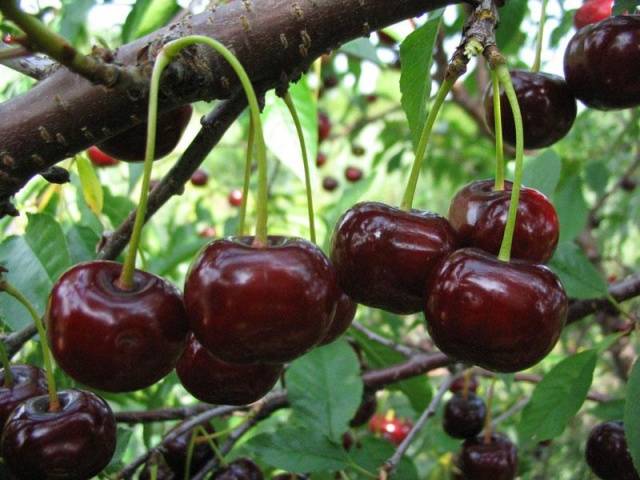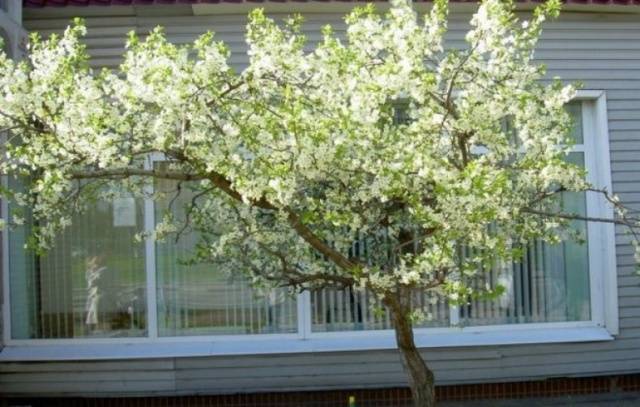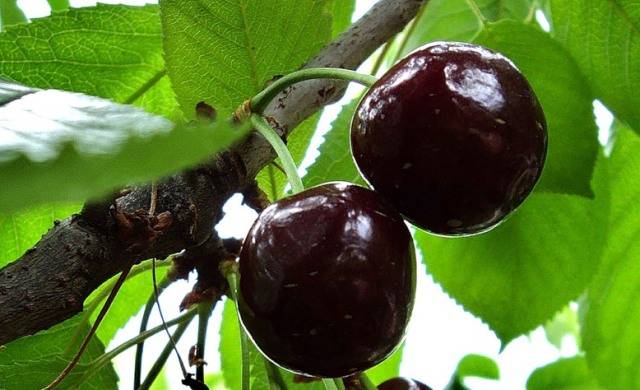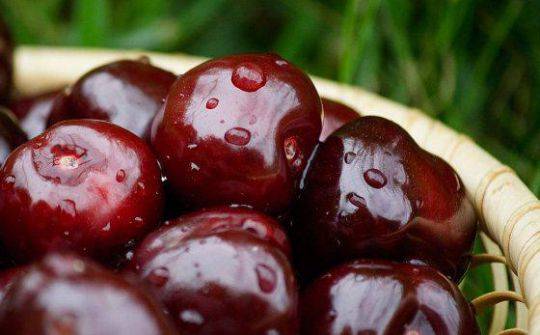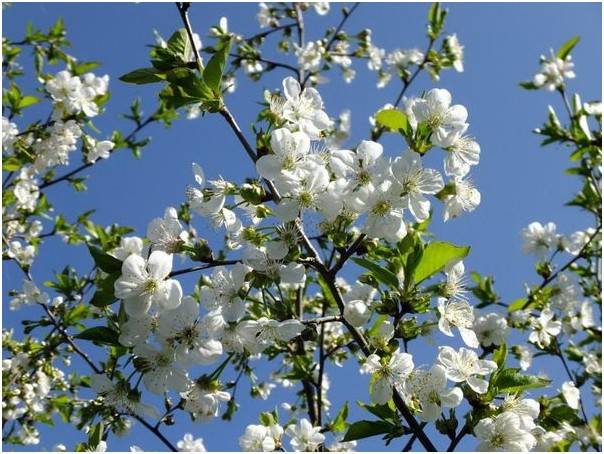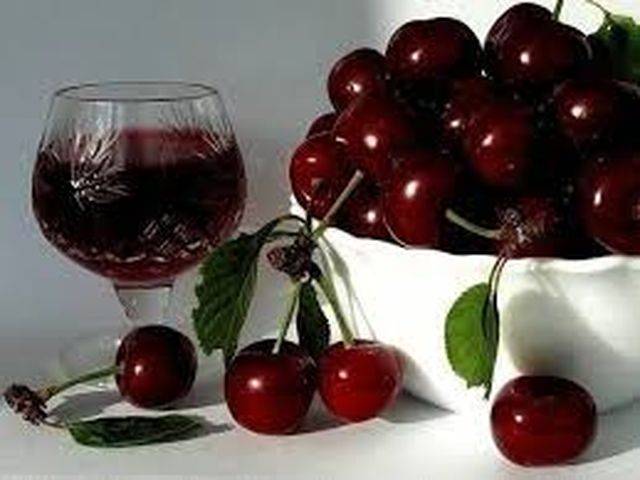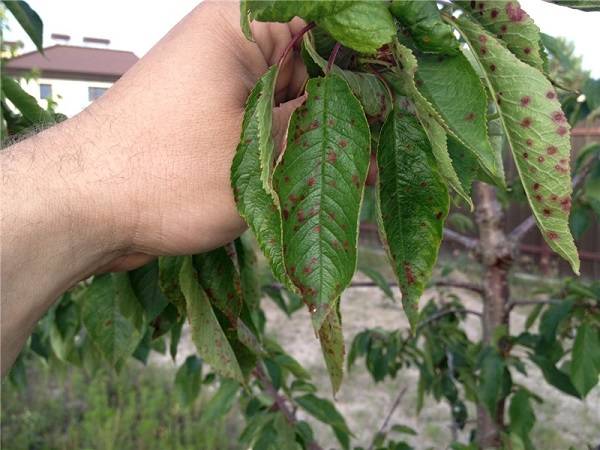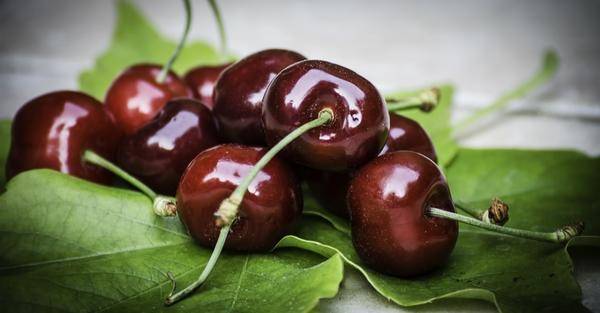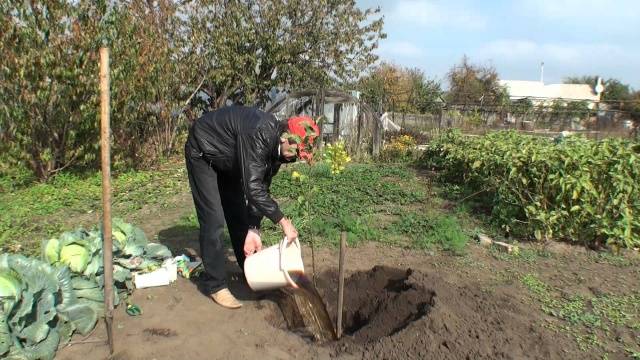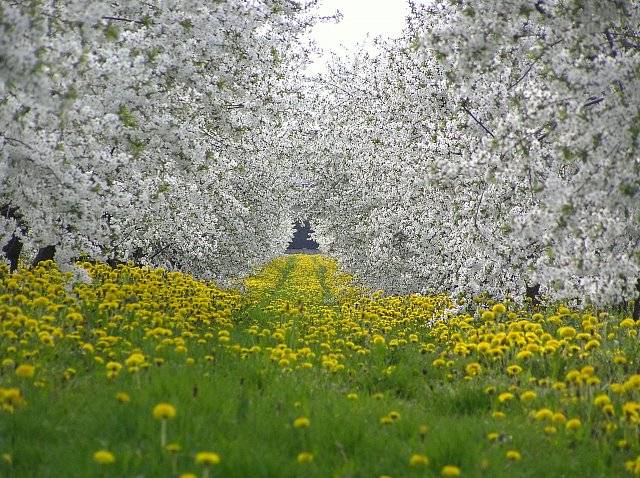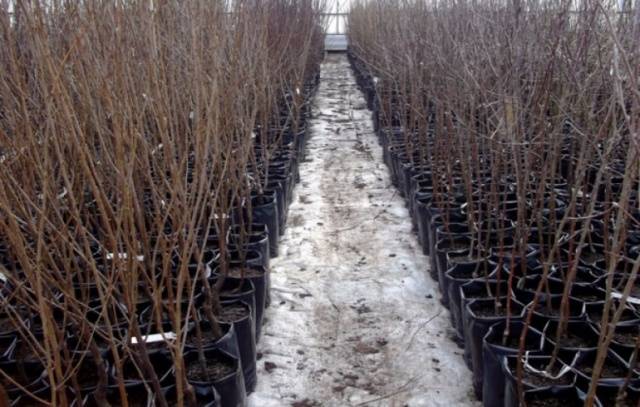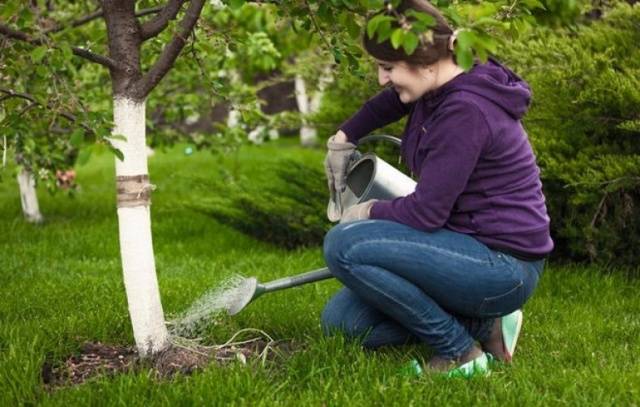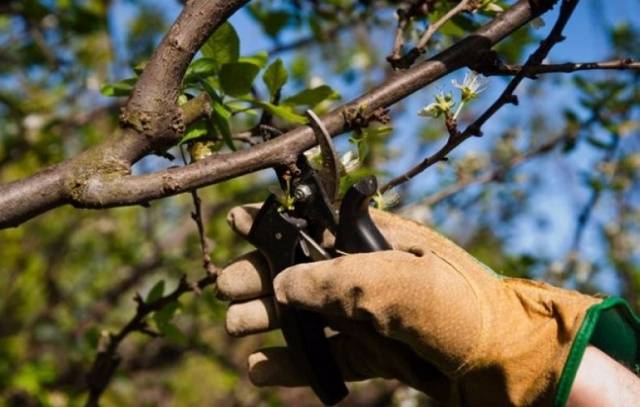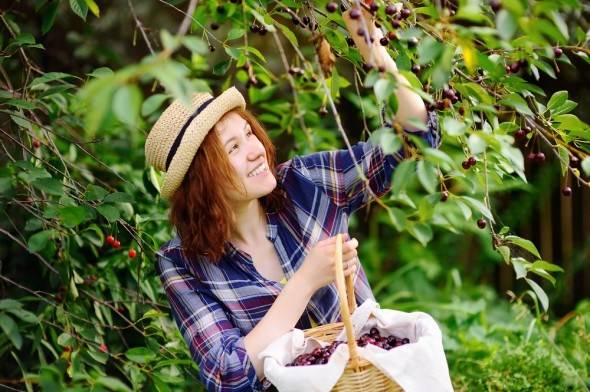Content
Cherry is one of the most popular fruit crops. Even those who do not like fruits containing a large amount of acid, love jams and juices from this wonderful berry. Varieties of universal use are especially appreciated. Chernokork cherry is rightfully considered one of the best.
Breeding history
Cherry Chernokorka is a Ukrainian variety of national selection. Where and when it was brought out is not known for certain. Since 1974, Chernokorka has been included in the list of varieties recommended for cultivation in the North Caucasus region.
Description of culture
Cherry Chernokorka grows no higher than three meters. It looks like a bush and a tree at the same time, it all depends on how it is formed. The crown of the Chernokorka is wide, rounded. The drooping branches make the cherry appear squat. The leaves are dark green, medium in size, oval in shape with a sharp tip and base.
Chernokorka cherry flowers are white, large, wide open, collected in 2-5 pieces. Ripe fruits are almost black, flesh and juice are maroon. It follows from this that the Chernokorka variety is a typical griot. The berries are flat-round, rather large, their average weight is 4-4.5 g, with high agricultural technology or in a good year, they can reach 5 g.
People far from gardening often ask themselves the question: is the Chernokorka cherry or cherry variety? Doubts arise because of the excellent sweet taste of the berries, the tasting score of which is 4.5 points. But the acid in the fruits is present in sufficient quantities, it is simply softened by the high content of glucose and fructose.
The stone of the Chernokorka cherry variety is small, it separates well from the pulp. The berry is firmly attached to the stalk and is not prone to shedding.
Cherry varieties Chernokorka grows well not only throughout Ukraine and in the North Caucasus region. She is planted in the Krasnodar Territory, Rostov Region.
Characteristics
There are no perfect cherry varieties. But before the mass death of culture from coccomycosis, residents of the south of Russia and Ukraine believed that they were lucky. Cherry Chernokorka was so popular that even the best modern varieties cannot match. And this despite her self-fruitlessness. However, in the south, the culture is so widespread that residents rarely think about pollinators - at least several varieties of cherries and sweet cherries grow in every yard.
Drought resistance, winter hardiness
Cherry varieties Chernokorka are highly drought tolerant. It needs to be watered only when there has been no rain for a whole month. True, this does not negate the autumn moisture charge - it helps the tree to winter well.
The frost resistance of the Chernokorka variety is high. But this only applies to regions where it is recommended to grow these cherries. In colder areas, choose a different variety for your garden.
Pollination, flowering period and ripening times
In the south, Chernokorka cherry blossoms in late April or early May.The term depends on the weather conditions. The berries begin to sing in late June - early July. For the southern regions, this is an average time frame. The fruiting period is extended for 2-3 weeks.
The Chernokork cherry variety is self-fertile. This means that without pollination, he will give no more than 5% of the possible harvest. To obtain a large number of fruits, you should plant Lyubskaya cherries or Yaroslavna, Donchanka, Aelita cherries nearby.
Productivity, fruiting
The first crop of Chernokorka cherries gives after four years of being on the site. The variety enters full fruiting in the seventh year. Productivity is highly dependent on pollination, agricultural technology and weather conditions.
If the recommended pollinators are planted next to the cherry, it is regularly pruned, fed and watered during the dry season, an adult tree can produce up to 60 kg of berries. If Chernokorka is pollinated by unknown varieties and grows as needed, then the yield will drop to 30 kg. However, this is also not bad for a small cherry.
The Chernokorka variety bears fruit steadily, constantly increasing its yield. As the tree grows old, the number of berries decreases.
Scope of berries
Chernokorka is classified as a universal cherry. Her berries are so tasty that when there are few of them, they are all eaten fresh. When the tree enters into full fruiting, jams, compotes are cooked from it, juices and wine are prepared. Among the alcoholic drinks made from Chernokorka, aromatic liqueurs are especially popular.
Despite the abundance of juice in the berries, it is Chernokorka that is often dried. True, this is problematic to do in the sun; you need to use an oven, oven or a special dryer.
Disease and pest resistance
Unfortunately, the Chernokorka cherry variety, remarkable in all respects, is strongly affected by coccomycosis. Even in ordinary years, several treatments are needed to get away from the disease. During epizootics (plant epidemics), even multiple spraying does not guarantee the health of the variety. Pests also do not bypass Chernokork, however, it is much easier to deal with them.
Advantages and disadvantages
Perhaps you need to start with the shortcomings, since the main one is the low resistance to coccomycosis can make the variety undesirable in the garden. Self-fertility should also be noted, as well as the fact that the characterization of Chernokorka as a cherry, resistant to frost, is true only in the southern regions.
The advantages of the variety include:
- Delicious large berries.
- High frost resistance of the variety in the regions recommended for cultivation.
- Strong attachment of berries to the stalk.
- Consistently high yield.
- Fruits for universal use.
- Cherry Chernokorka grows low, which makes harvesting easier.
- Elongation of fruiting.
- High drought tolerance.
Landing features
Chernokorka does not have any special requirements that differ from other varieties of cherries. But the harvest depends on the regular care of it. An overlooked cherry can cut it in half, even in the presence of the right pollinators.
Recommended timing
Since Chernokorka cherries are grown in the south, they need to be planted in the fall, after leaf fall. Before the onset of frost, it will have time to take root, and at the beginning of next year it will immediately start growing.If you plant Chernokorka in the spring, most likely, the tree will die. In the south, a short spring is often immediately replaced by heat, and no amount of watering will be able to compensate for the heat.
If you choose to grow the variety in temperate climates, plant it in early spring.
Choosing the right place
What cherry does not like is the close standing of groundwater. If they approach the surface less than 2 m, you need to arrange good drainage or plant the tree on a gentle slope.
Cherries need good lighting and protection from strong winds. And not only cold winter, but summer, drying up.
The soil should have a neutral reaction and a loose structure. Organic matter needs to be added even to black soil.
What crops can and cannot be planted next to cherries
It is best to plant pollinating varieties next to cherries. Other stone fruit crops located nearby will not interfere. But the walnut should be planted away from the cherry. The same applies to oak, birch, elm. It should be remembered that black currants and cherries do not tolerate each other, and shrubs with rapidly expanding rhizomes (raspberries, sea buckthorn) will compete with the crop for nutrients and water.
When Chernokorka takes root, you can cover the near-trunk circle with a lawn or ground covers. This will protect the root from overheating and slow down the evaporation of moisture.
Selection and preparation of planting material
1-year-old seedlings up to 90 cm high, or two-year-old up to 110 cm, take root well. One and a half meter trees are most likely overfed with nitrogen or stimulants. The root system must be well developed, healthy and free from damage. The greenish color of the bark indicates that the wood has not matured, cracks show that the seedling is either sick or has undergone sudden changes in temperature, and this is unacceptable.
Immediately before planting, Chernokorka cherries with an open root system must be soaked for at least 3 hours, and the container plant must be watered.
Landing algorithm
A planting hole for cherries must be dug in advance, preferably a month in advance. If this is not possible, it must be completely filled with water several times, and wait until the moisture is completely absorbed. The diameter of the hole should be approximately 80 cm, the depth should be at least 40 (if drainage is done, this figure will increase by 1.5-2 times). Sour soil is neutralized with lime, sand is added to dense clay soils. Further, the landing is carried out in the following sequence:
- A fertile mixture is being prepared: a bucket of humus and 50 g of potash and phosphorus fertilizers are added to the top layer of the earth.
- A strong support is driven in 20 cm from the center for the sapling garter.
- Cherries are set at the bottom of the pit so that the horse's neck rises 5-8 cm above its edge.
- The root is gradually covered with a fertile mixture. It must be sealed to avoid voids.
- The seedling is tied to a support.
- A roll of the remaining earth is formed around the trunk circle.
- Cherries are watered with 2-3 buckets of water and mulched with humus.
Follow-up care of the culture
The seedling is watered abundantly throughout the fall and the entire next season. Then it is necessary to moisten the soil only if the summer is hot and dry. In the fall, they must carry out moisture charging.
It is best to feed the culture with ash and mullein. Mineral fertilizers for cherries are selected so that they receive a lot of nitrogen and potassium. Phosphorus is needed in limited quantities, but it cannot be ruled out at all.
To obtain a good harvest, formative pruning is carried out before the start of sap flow. Sanitary - as required. This operation will help to avoid thickening of the crown, which contributes to the development of fungal infections, in particular, coccomycosis.
It is not necessary to cover the Chernokorka for the winter in the regions recommended for growing the variety. From hares and other rodents, the bole is tied with straw or burlap for the winter, if the cherry is formed in the form of a bush, a wire fence is installed.
Diseases and pests, methods of control and prevention
Unfortunately, the delicious and beautiful Chernokork cherry is severely damaged by coccomycosis. Signs and measures to combat the most common problems of the variety are shown in the table.
Diseases, pests | Symptoms | Treatment | Prophylaxis |
Coccomycosis | The leaves turn yellow, specks appear on them, which grow and turn into holes over time. In the middle of summer, the affected vegetative organs fall off | On a green cone and after leaf fall, cherries are treated with a copper-containing preparation. Before the onset of frost, the tree is sprayed with iron sulfate. During the pouring of the fruit, 2 kg of wood ash and 60 g of laundry soap are dissolved in a bucket of water. The number of treatments - 2-3 with an interval of 10-14 days | Timely cleaning of fallen leaves, sanitary and shaping pruning, preventive spraying. Treating cherries with non-toxic drugs epin and zircon can increase the immunity of cherries |
Monilial burn (moniliosis) | Shoots and flowers (fruits) begin to dry out. This often happens in wet weather. Fruits are deformed, cracks form on the bark | First, all affected organs are removed, capturing a part of healthy tissue, the sections are processed with garden varnish. The treatment is then carried out by spraying with copper preparations or other suitable fungicides. | The same as with coccomycosis |
Cherry aphid | Most of all, it affects young leaves and shoots, sucking out cell sap from them. Vegetative organs deform, become sticky, then wither and dry out | With a small number of insects, a solution of laundry soap can be used for spraying. If the aphid colony is large, treat with an appropriate insecticide | Fighting anthills. Regular pruning |
Cherry fly | The insect lays eggs in the berries, from which the larvae hatch and eat the cherry from the inside. Fruits soften, rot, crumble | Folk remedies are ineffective. 60-70% of pests can be destroyed with special traps. Need insecticide treatment about a month before harvest | Timely pruning, harvesting fallen leaves, digging the trunk circle in the fall |
Conclusion
Cherry Chernokorka would be the best solution for a southern garden, but a strong susceptibility to coccomycosis can hardly please. If you are ready to fight this scourge, plant a pollinator next to it and enjoy delicious, healthy and beautiful berries.
Testimonials
